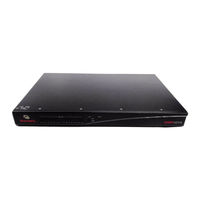User Manuals: Avocent DSR Series DSR8035DAC IP Switch
Manuals and User Guides for Avocent DSR Series DSR8035DAC IP Switch. We have 3 Avocent DSR Series DSR8035DAC IP Switch manuals available for free PDF download: Installer/User Manual, Release Note
Avocent DSR Series DSR8035DAC Installer/User Manual (138 pages)
Avocent DSR Series DSR1010: User Guide
Table of Contents
Advertisement
Avocent DSR Series DSR8035DAC Release Note (3 pages)
Avocent DSR Series DSR1010: Release Note Version 3.3.0.7, 3.3.0.8, or 3.6.3.7
Table of Contents
Advertisement
Advertisement


